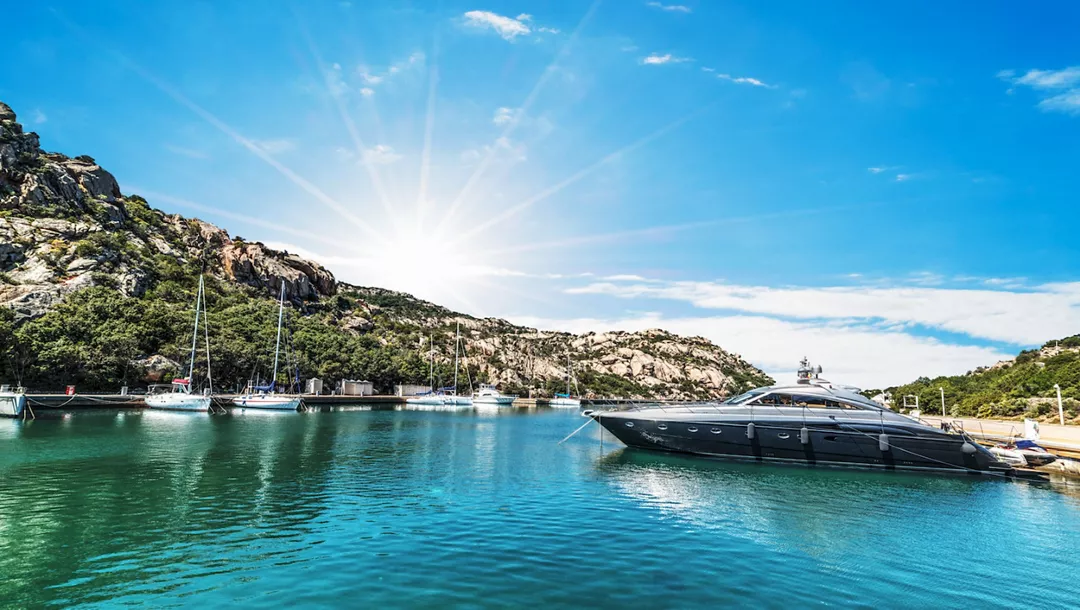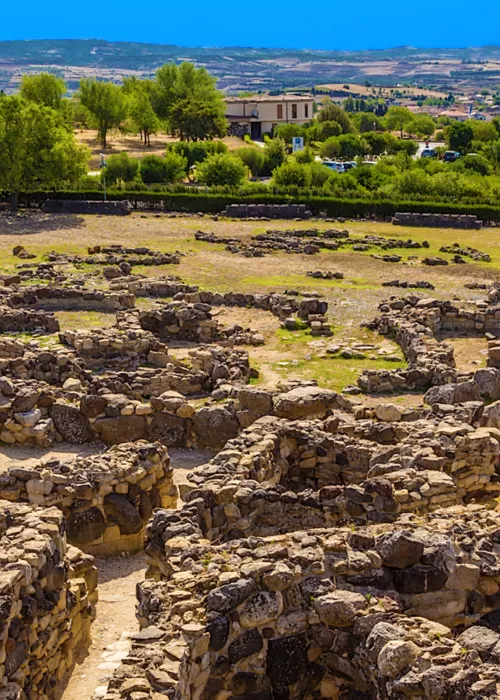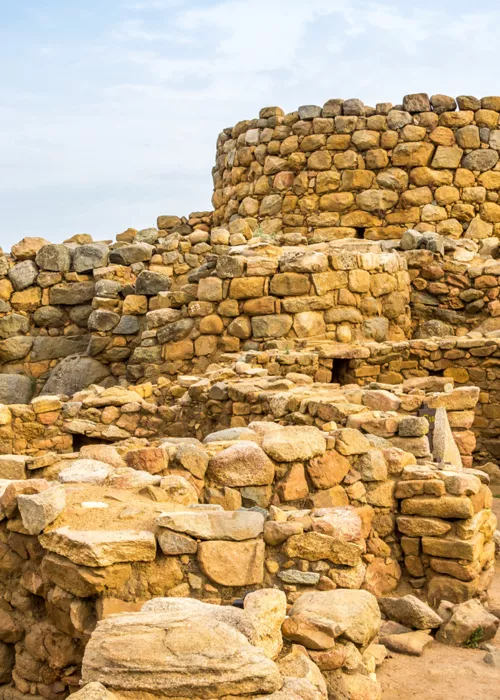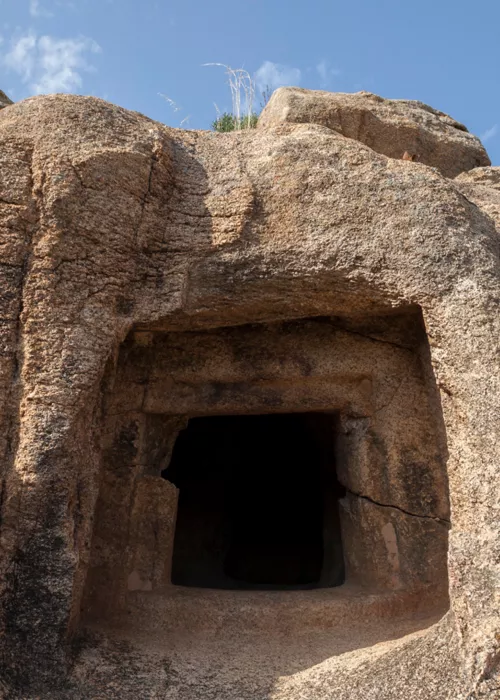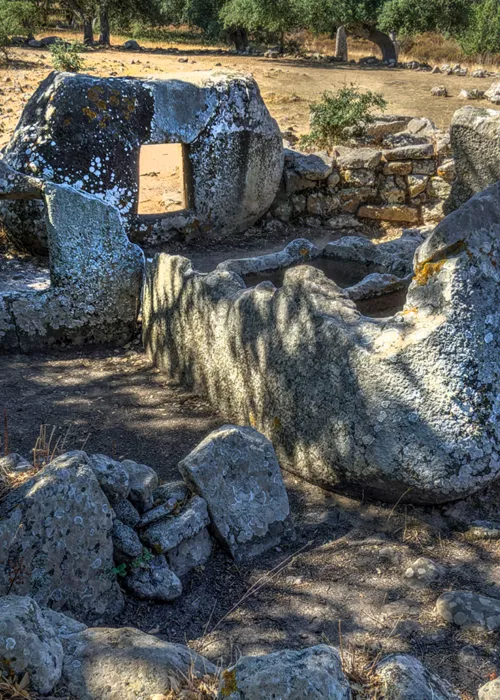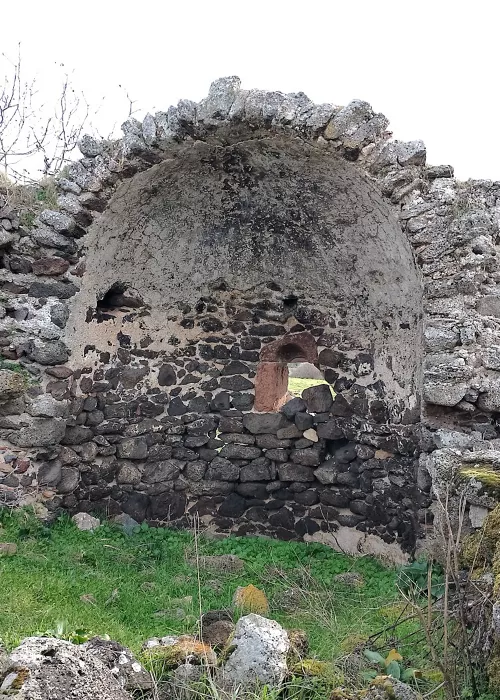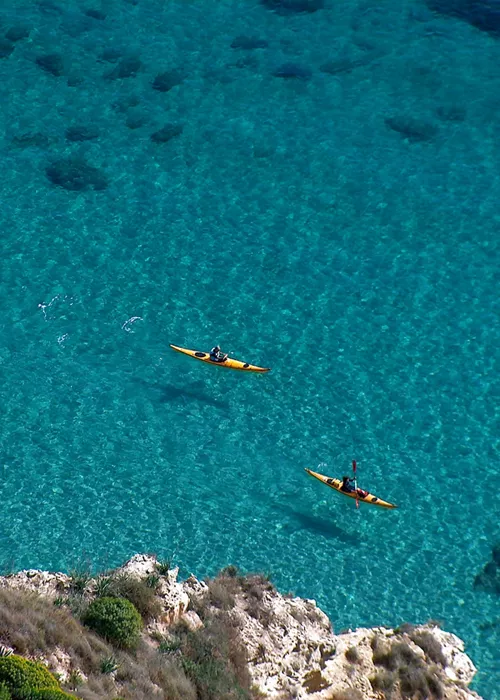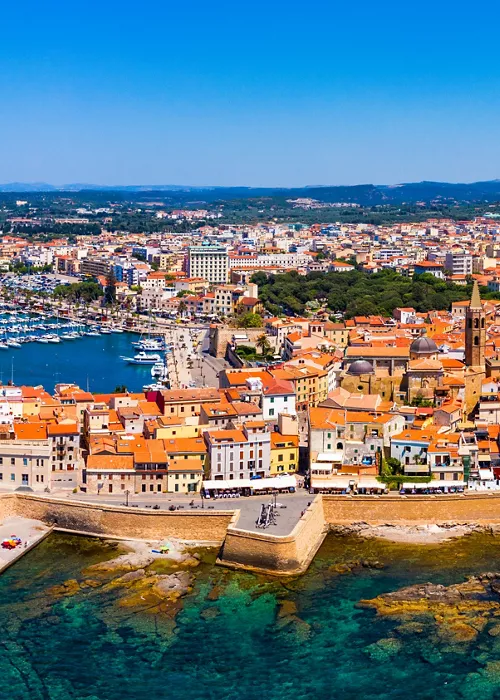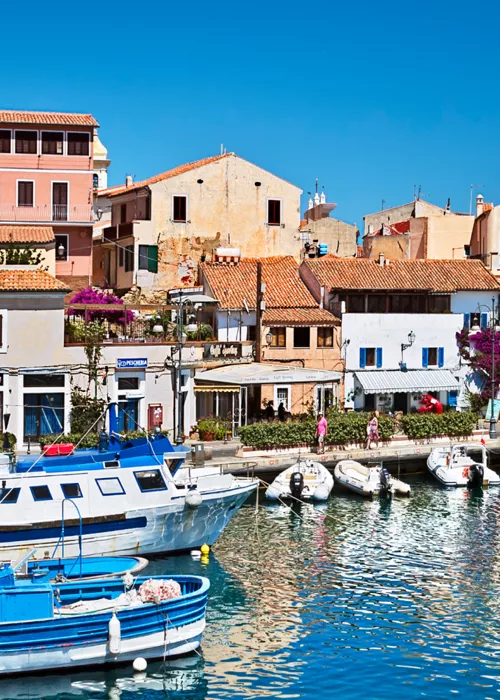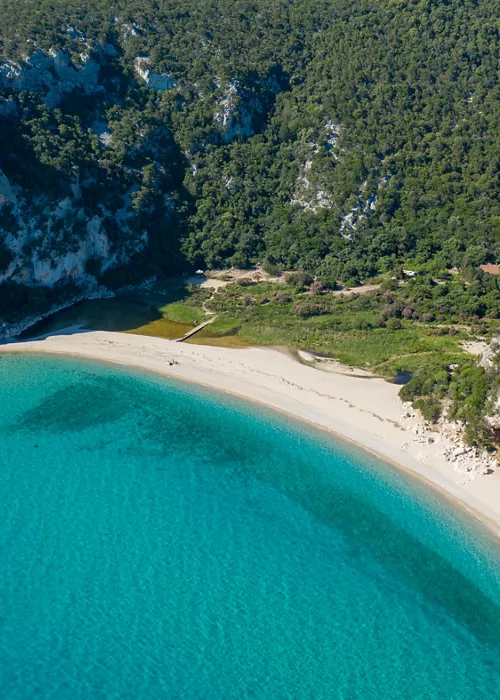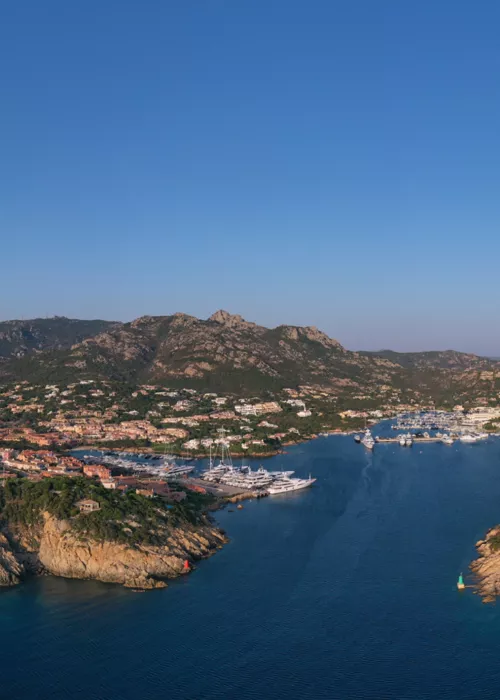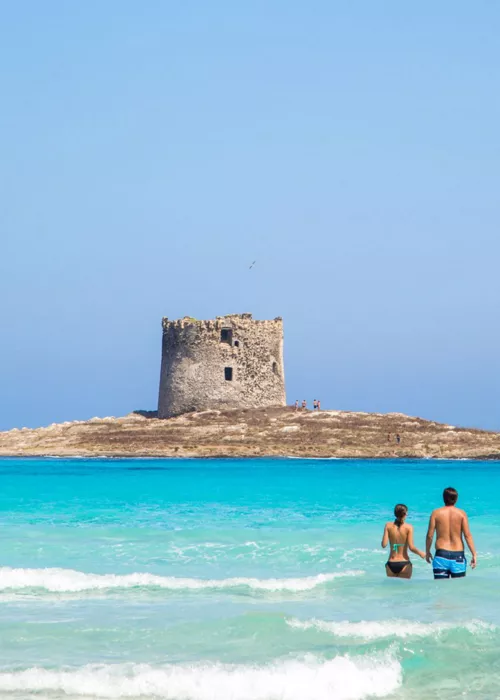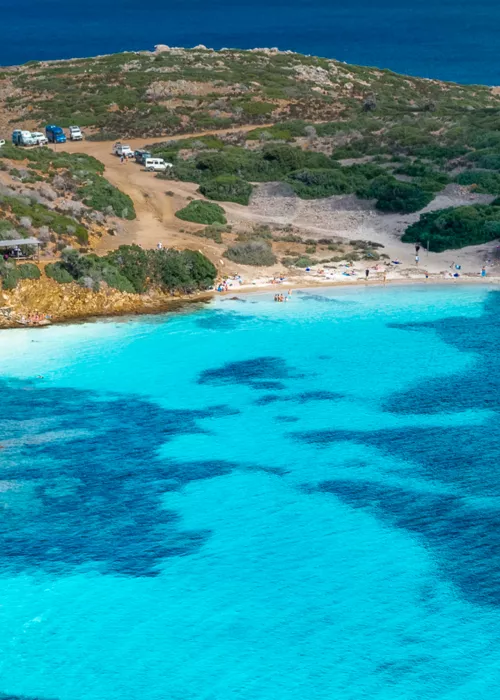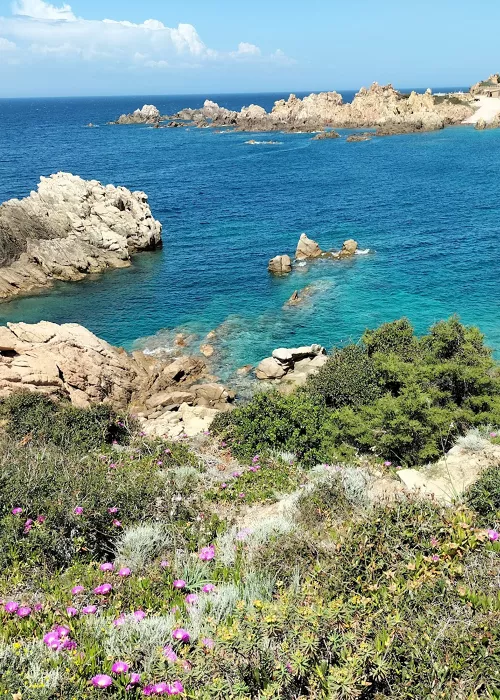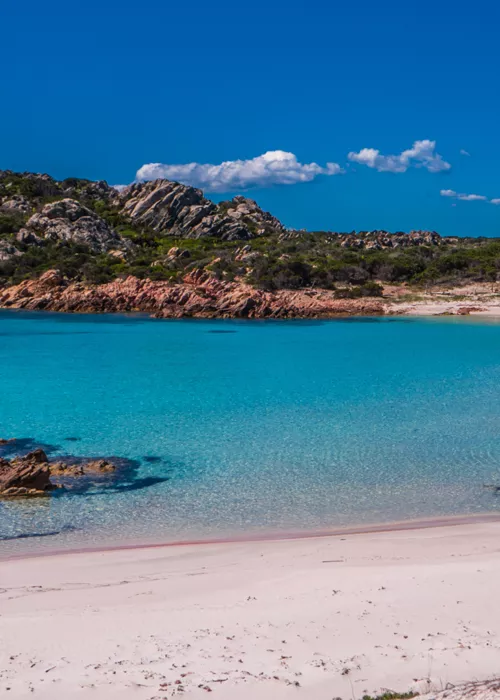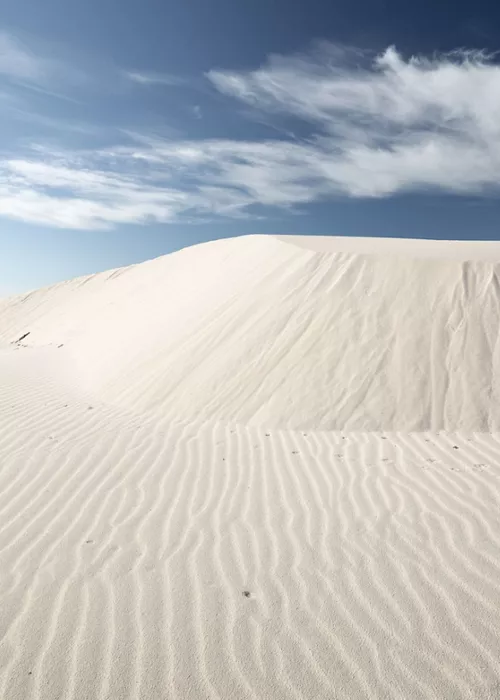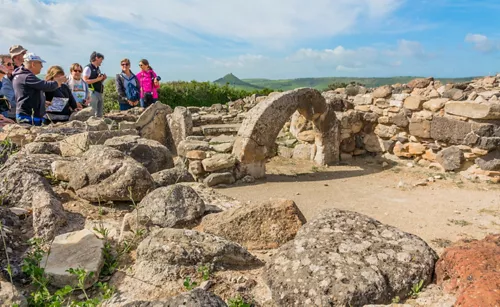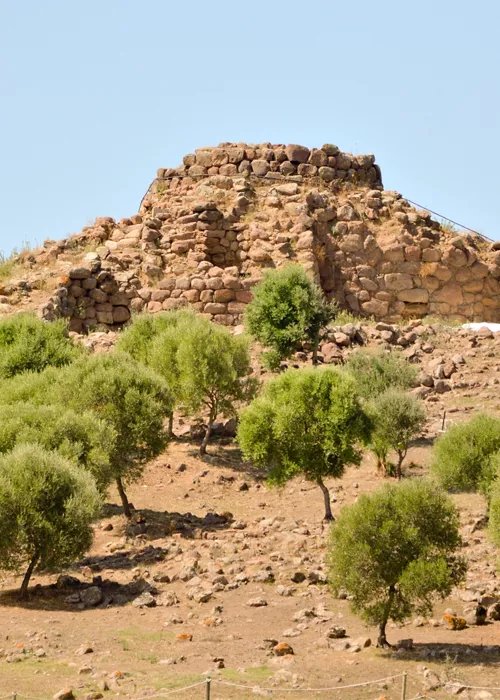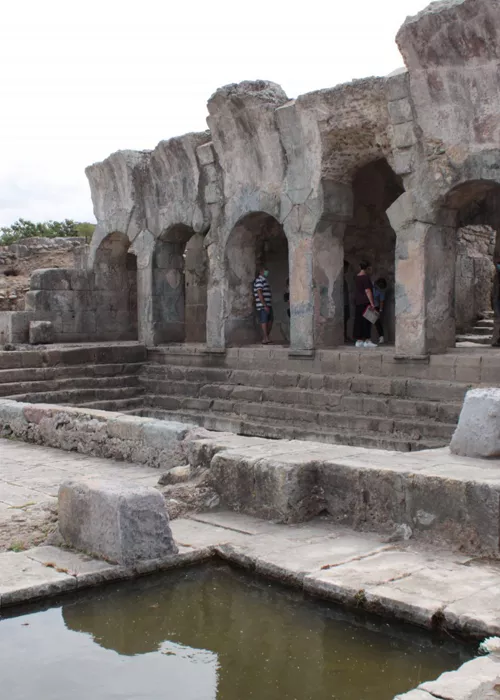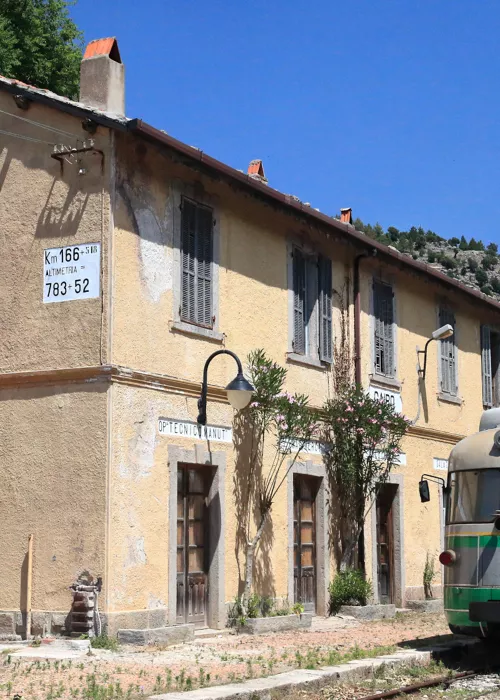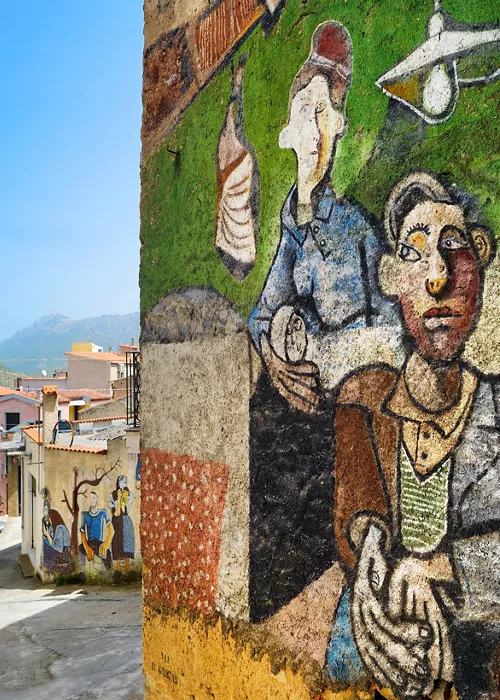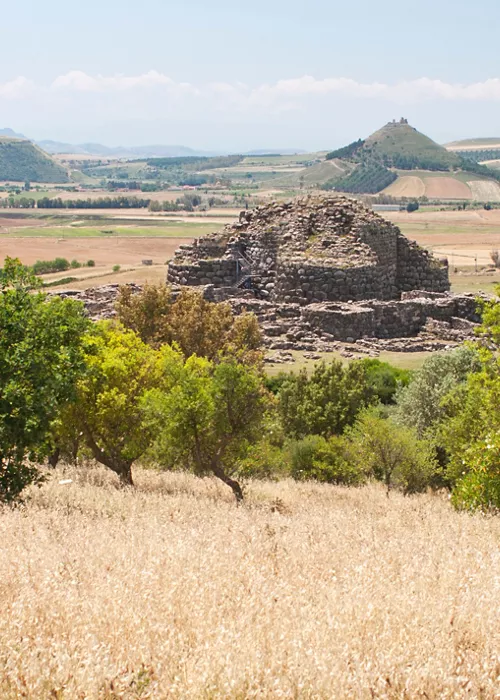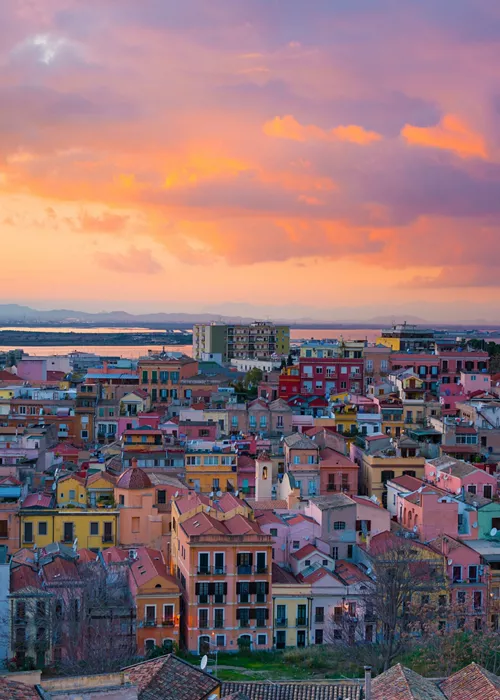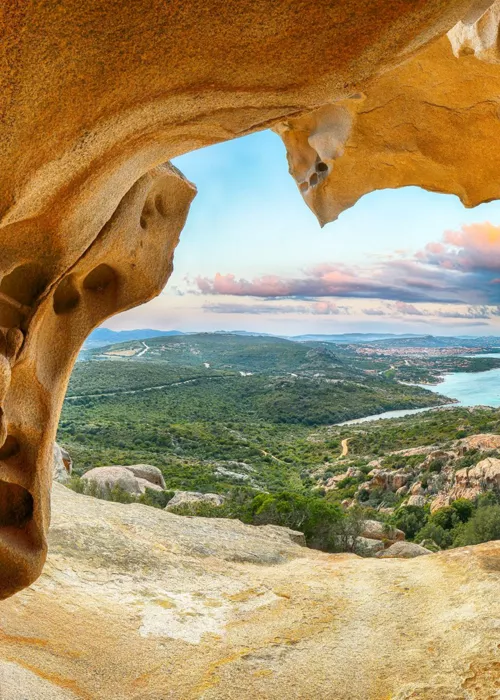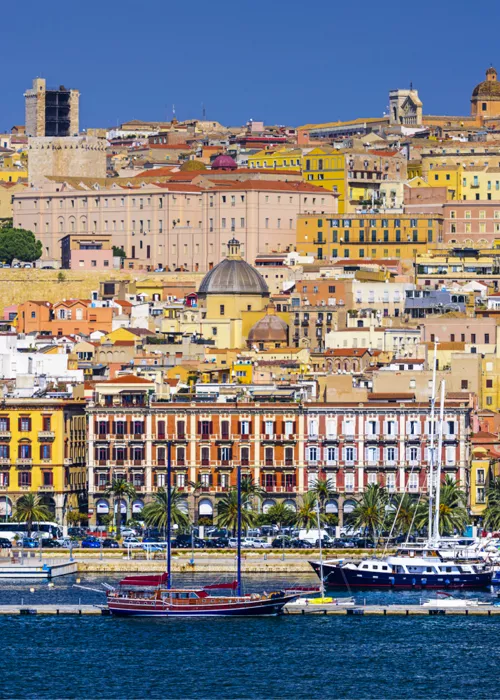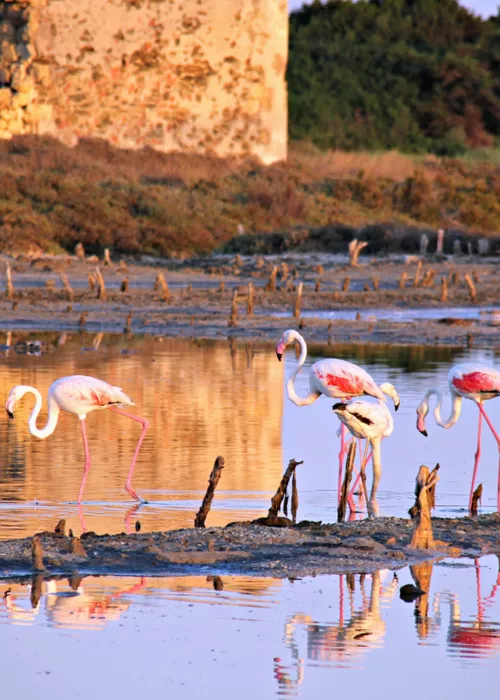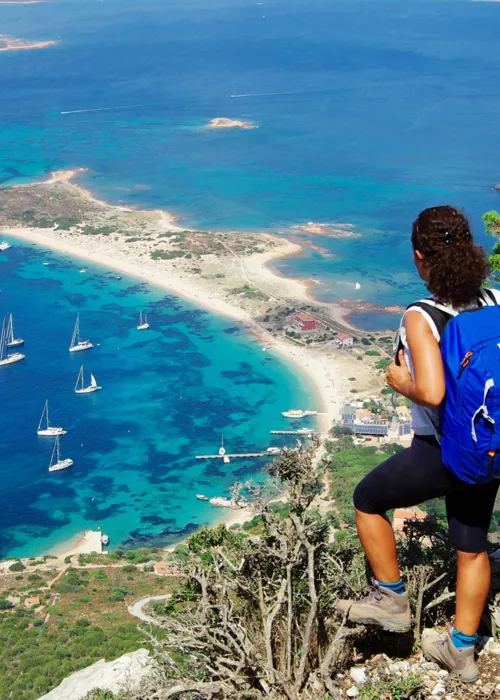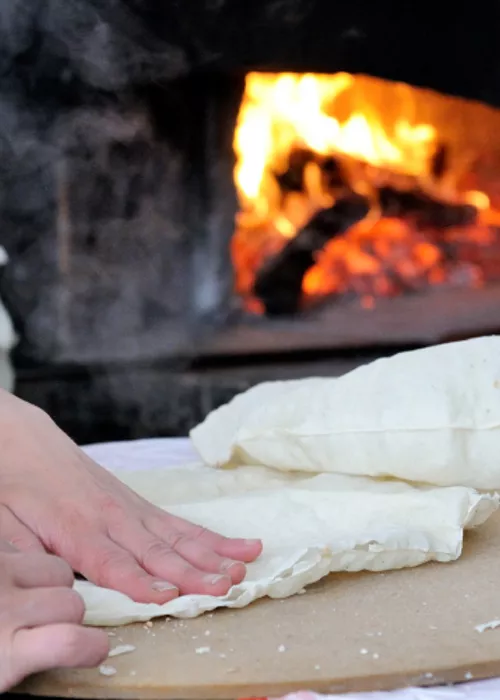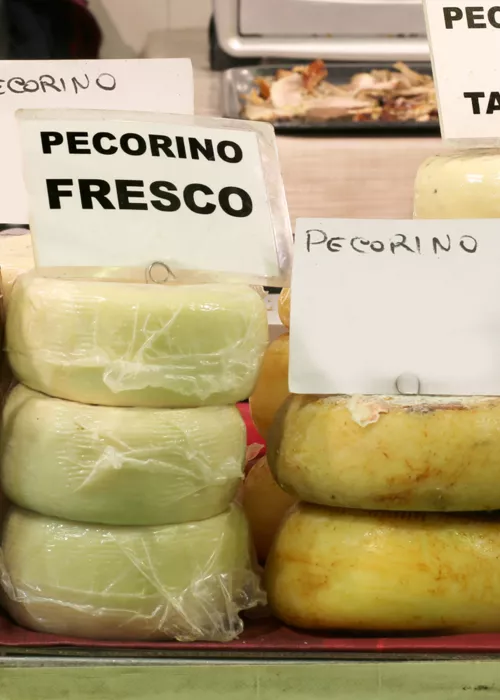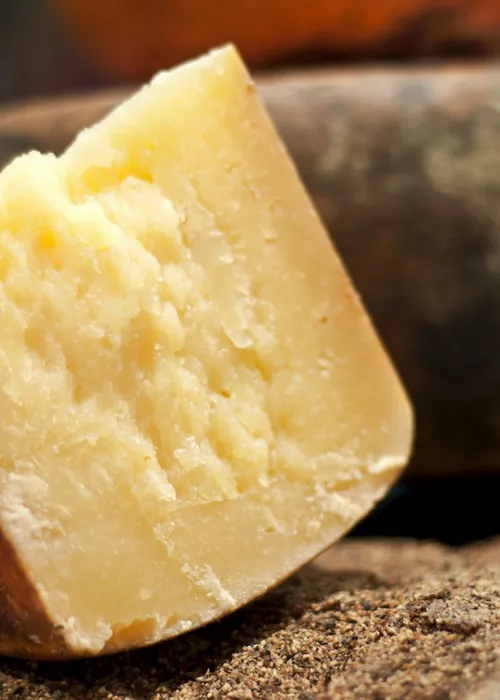Sardinia, land of emerald sea, nuraghi and millenary traditions
6 minutes
It is known the world over for its emerald sea and white beaches, even though the heart of its territory is predominantly mountainous: welcome to Sardinia, a land of contrasts, superb nature and millenary traditions.
Origins and history of Sardinia
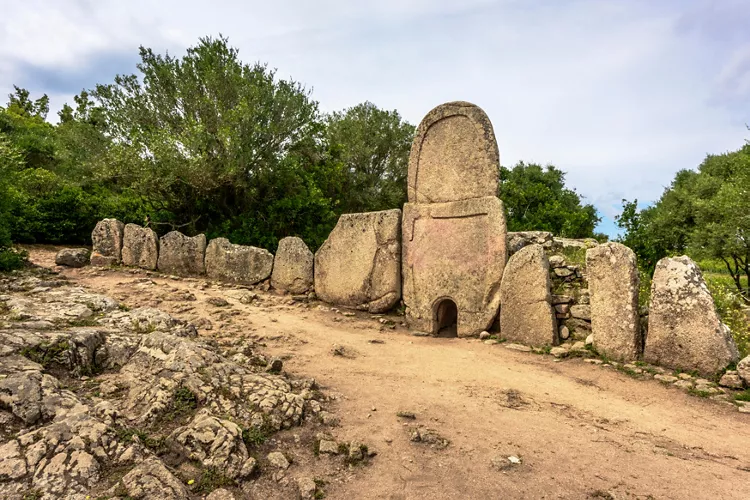
Located in the centre of the Mediterranean, Sardinia has been an important port of call for civilisations on its shores.
Particularly important for the history of the island was the Nuragic civilisation from the Bronze Age onwards, which has left exceptional evidence in the area: 8,000 nuraghi, ancient stone constructions with a truncated cone shape. The most significant specimen is Su Nuraxi in Barumini, but there are many other well-preserved nuraghi scattered around the island, as well as other valuable vestiges of the past: the tombs of the giants, i.e. burial monuments from the Nuragic period, the domus de janas, prehistoric tombs carved into the rock, the menhirs of Sardinia, mysterious vertical stones driven into the ground.
The Nuragics were warriors and navigators, shepherds and peasants divided into tribes who engaged in important trade with peoples from the Mediterranean as far as Libya.
During the Giudicati era - from the 9th century onwards, when Sardinia was divided into four independent Giudicati - the island underwent an attempt at Muslim conquest by Mujāhid al-ʿĀmirī, a military and political figure from Islamic Spain, which was foiled by the Sardinians, by land, and by the fleets of the Maritime Republics of Pisa and Genoa, by sea.
Another fundamental historical phase for the island was that of the Kingdom of Sardinia, established by Pope Boniface VIII to resolve the crisis between the Crown of Aragon and the Duchy of Anjou.
At the end of the War of the Spanish Succession, the Kingdom of Sardinia became the domain of the Habsburgs of Austria and was then ceded to the Duke of Savoy Victor Amadeus II. In 1847 there was the fusion of Sardinia with the House of Savoy and the extension of the Statuto Albertino to the island.
Fourteen years later, in 1861, the Kingdom of Italy was born from the Kingdom of Sardinia.
Sardinia's main cities
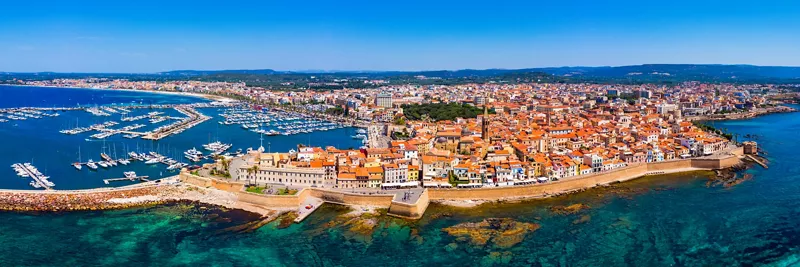
Start your visit from Cagliari, the main city and capital of the island, located in the south, in the so-called gulf. For the people of Cagliari the name is ‘Casteddu’, meaning Castleas in the fortified medieval quarter perched on a promontory that is the first thing you will see if you arrive from the sea.
You will discover the rest little by little, because in the shade of towering palms and Jacaranda trees, Cagliari jealously guards what the many civilisations of the past have left it: you will recognise the traces of the Punics in the Necropolis of Tuvixeddu the Roman ones in the beautiful Amphitheatre, the Byzantine ones in the Basilica of San Saturninothose of the Phoenicians in the 13th-century Cathedral and those of the Piedmontese in the Bastions of Saint Remyerected at the end of the 19th century.
You certainly cannot miss the Poetto beach, for a dip in the crystal-clear waters that slowly slope down before becoming deep, some running along the pedestrian promenade dotted with Caribbean palm trees, or an aperitif or dinner almost pied dans l'eau in one of the many venues dotted along the shoreline.
Exactly on the other side of the island, to the north-west, is Alghero. Founded in the 12th century as a fortress city by the Genoese, it suffered Aragonese rule that influenced its art and traditions.
Don't miss the Spanish Towers and the Genoese defensive walls, nor the sun and sea bathing in the small beaches surrounding the town, the shopping of coral jewellery in the old town centre, a handicraft of excellence for which Alghero is world-famous, and its unbridled nightlife.
Among the centres most frequented by tourists Olbia capital of the glittering Costa Smeralda and gateway to the picturesque Gallura region, and back south,
Sant'Antioco, a small municipality on the islet of the same name connected to the mainland, beloved for its secluded beaches, don't miss Porto Flavia, and wild nature.
Talk about pristine environments and breathtaking beaches: Cala Goloritzé, in the Gulf of Orosei, is considered one of the most beautiful spots in the world, as is Cala Luna, 800 metres of fine golden sand that plunges into the clear blue sea. Something more one-of-a-kind, in other aspects, is Barumini, home to Su Nuraxi, the largest nuragic village in the whole of Sardinia built with ancient volcanic stones from the area.
What to see in Sardinia: 4 unmissable stops

The biggest dilemma in Sardinia is choosing what to see, the good news is that whatever you decide you will not be disappointed.
However, there are some destinations that cannot be missed, starting with the famous Costa Smeraldawhich stretches 55 kilometres of enchanting beaches, granite rocks and crystal-clear waters along the coast of Gallura, from Porto Cervo to the Gulf of Cugnana, at the beginning of the municipality of Olbia. A wonder that extends to the entire north-east coast, from Golfo Aranci to Porto Rotondo to San Teodoro.
Just as much beauty characterises the delightful town of Stintino in the province of Sassari, famous for the Pelosa beachblue water, shallow waters and views of the island of Asinara.
Costa Paradiso, also in the north of the island, beloved for its small and picturesque centre of Castelsardo and Isola Rossa, and the island of La Maddalena, the heart of the so-called archipelago. A former military base, it is the largest and only inhabited island within the magnificent Maddalena Archipelago National Park.
Sardinia's unusual places: 4 destinations
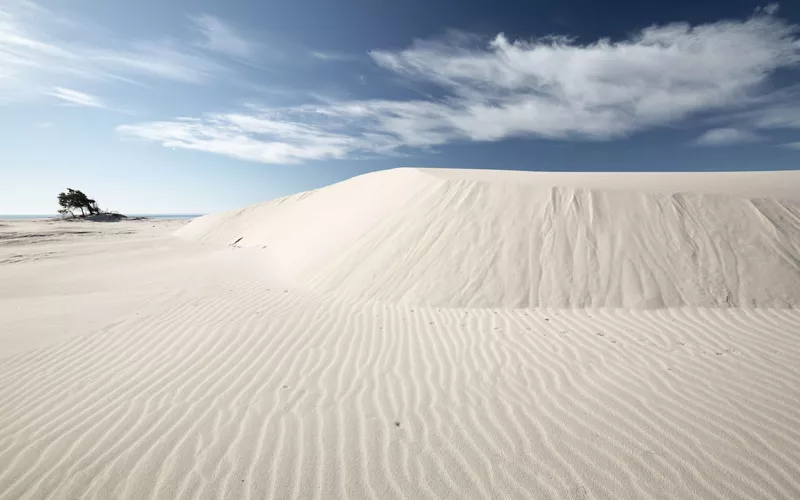
If you like to get away from the beaten track, head for the Penisola del Sinis, a strip of land in the protected area of the same name that is a true nature sanctuary where you can enjoy all kinds of open-air activities throughout the year.
The small beach of Porto Flavia, on the other hand, overlooks the crystal-clear sea beside the remains of the mining structure, surrounded by a cool pine forest. Attracting attention here is the old mine that is no longer in operation. A port suspended in the middle of a cliff face, overlooking the coast and from which a very long tunnel starts.
Or, visit the 'Sardinian desert' of Is Arenas Biancas, in the south-west of the island: the Dunes of Porto Pino, a kilometre of sandy hills shaped by the wind that reach a height of 30 metres.
Or, in Castelsardo, in the province of Sassari, the Roccia dell'Elefante (Elephant Rock), a large, rust-coloured boulder of volcanic origin, eroded by time and wind until it looks like a real, seated elephant dominating the valley.
Sardinia's typical products: 5 specialities
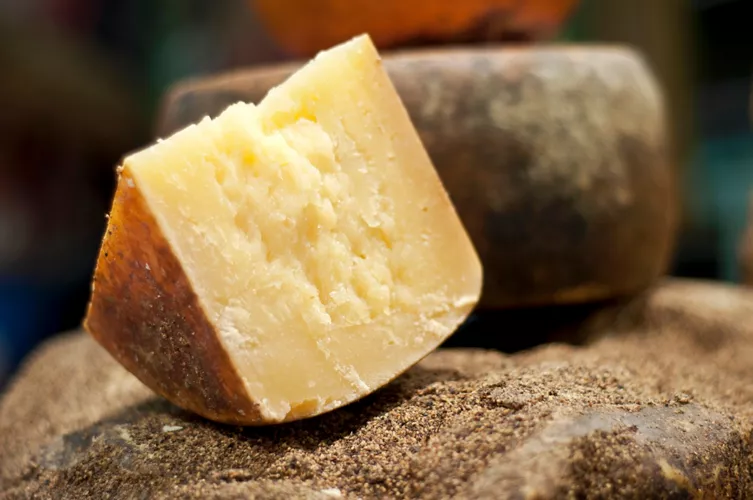
The traditional Sardinian cuisine is so rich that it would merit a very long digression.
Start with the culurgiones, potato, cheese and mint ravioli typical of Ogliastra, so beautiful they look embroidered. Or the Sardinian fregola, a preparation of durum wheat semolina and water, to be served with mussels and arselle, shellfish or sausage and artichokes.
Among typical Sardinian products , you must of course try the pane carasau, so thin that it is no more than 3 millimetres thick, perhaps accompanied by a Sardinian pecorino, the king of cheeses on the island.
To end in style, a small glass of Sardinian myrtle, a typical liqueur obtained by alcoholic maceration of myrtle berries.
Events in Sardinia: an opportunity not to be missed
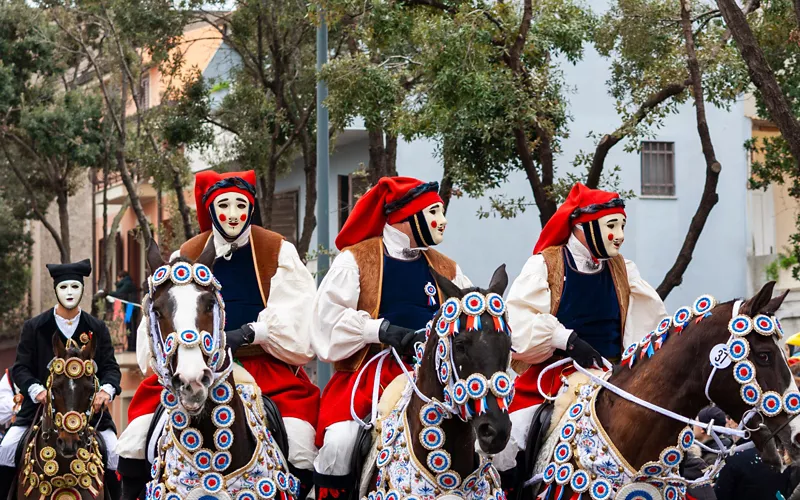
There are numerous appointments with the millenary traditions of Sardinia.
We recommend Sa Sartiglia, one of the last equestrian tournaments of medieval origin in the Mediterranean area, held in Oristano on the last Sunday and Tuesday of carnival.

